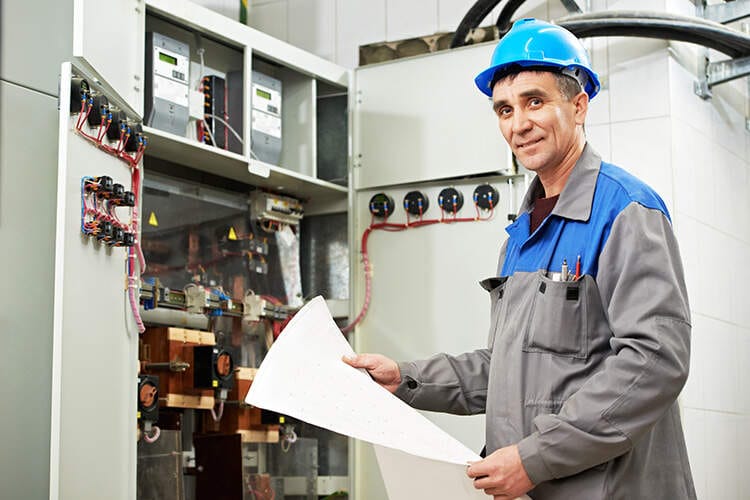Electrical work is very important in construction but is also one of the “Fatal Four” or source of highest hazards on the site according to OSHA. That said, both state and federal laws have set a very specific set of guidelines that cover construction safety to protect workers from electrical hazards that can lead to injuries and deaths. This is to prevent losing a crew member and a life, to avoid delays in builders schedule and going over budget, and to minimize claims by workers and their families when they’re able to prove that the owner or contractor has been neglecting electrical hazards at the site.
According to the OSHA, some of the dreaded electrical hazards present in construction sites re caused by:
- Contact with overhead power lines
- Damaged power tools and equipment
- Damaged insulation
- Exposed electrical parts
- Improper grounding
- Inadequate wiring
- Overloaded circuits
- Wet conditions
There are still other sources of electrical hazards at the site, and it is the duty of the higher-ups to provide a safer workplace for all their crew members at all times.
Now, in our previous blogs, we’ve been discussing how we can boost worker safety at the site. Some of the strategies include real-time construction crew management with the help of digital tools such as construction project management software; updating PPEs, safety accessories, and facilities that can prevent injuries or lessen fatalities or effects or the accident; holding regular safety training; and so on.
But there are more specific ways to control electrical hazards at the construction site than this that you should know about. Accidents can cause delays in your builders schedule and may lead to over budget. And worst, it can lead to legal fights. These three are the most dreaded issues in construction and you wouldn’t want to go through these kinds of ordeals as they can break your business.
Electrical Hazards in Construction Sites
The OSHA claims that about 8.6% of construction workers who died previously was due to electrocution. Workers are facing a number of electrical hazards like the ones we mentioned above. One other source of electrocution is when lightning strikes so OSHA greatly discourages working with electricity during bad weather. The organization asks all construction sites to strictly adhere to the OSHA 1910.331-.335, 1910.269 as well as the NFPA 70E Standard for Electrical Safety in the Workplace. OSHA believes that these guidelines can help prevent a number of accidents at the worksite.
Exposure to electricity is a major hazard to construction workers. Electrocution happens when workers are exposed to a lethal amount of electricity. Death happens during the electrocution.
Apart from electrocution, electrical hazards expose construction workers to the following:
- Arc flash/arc blast
- Burns
- Electrocution
- Explosions
- Fire
- Shock
Electrical tradesmen have the most cases of electrocution and injuries caused by electrical hazards per year. And the main source of danger for them is working on “energized” electrical conductors and circuit parts. The proper protocol on working in that kind of condition is to de-energize and use lockout or tagout procedures. Furthermore, the construction management should effectively establish an electrically safe worksite following the recommendations under Article 120 of NFPA 70E-2018.
Non-electricians are not exempted from the numerous electrical hazards present at construction sites. Carpenters, laborers, mechanics, roofers, and even supervisors who handle power tools and electricity-powered machinery and equipment often fail to recognize electrical dangers. It is then important to hold safety meetings and training to orient everyone working at the site with the dangers they need to avoid.
Safety training should be a requirement before starting out on a project. Deploying unqualified workers is often a big problem as they are clueless as to what dangers should be avoided at the site. This happens when the management rushes the start of the project, bypassing all the orientation and training that their workers should go through first. As a result, workers are unable to read safety signs or interpret safety codes. They don’t know the right plugs to use, the right tools for the right task, the proper stocking of extension cords and organizing of powered lines, and so on.
Taking that into consideration, The OSHA 1910.333(c)(2) or “Work of Energized Equipment” states that only qualified personnel should be permitted to work on electric circuit parts and equipment that have not been de-energized. They should be able to work safely and should be familiar with the proper use of PPEs, precautionary techniques, insulated tools, and insulating and shielding materials. Furthermore, the OSHA 1910.335(a)(1)(i) requires that all construction crew members should be provided with proper PPES, covering certain parts of the body so as to protect them from electrical hazards.
10 Ways to Prevent Electrical Hazards
To prevent your construction crew from these hazards, we listed down some tips on how to enhance electrical safety in your projects.
- Risk Assessments of the Site
One of the preparations that should be done before starting any construction project is site risk assessment. Safety engineers should survey the working area to see what hazards are to be expected. This kind of pre-construction check will allow you and your workers to understand the setup of the site and recognize dangers that they may possibly encounter as they work. This also helps the safety engineer to prepare safety setups and plan procedures to prevent any injuries and deaths from happening.
- Determining Electrically Hazardous Areas
After assessing the site, it is the duty of the safety engineer to pinpoint locations where electrical hazards may be present. Electricity is a basic requirement in construction sites as most tools and equipment used today are power-operated. Unfortunately, bigger equipment and machines are not yet cordless or battery-operated. That means electrical hazards are everywhere in construction sites. The danger becomes graver when the electrical subcontractors start working on the electrical system of the project.
When determining electrical hazard-prone areas, safety engineers should take photos of them. It will be more efficient when they share them with the rest of the project team so they are aware of the hazardous sites. Using construction project management software to quickly inform about these areas will then be helpful as new danger zones can be determined only when the project already started. So keep everyone updated so the crew members will know where to take extra caution.
- Use Approved Testing Equipment
Testing equipment are an important tool that will help workers prevent shocks, injuries, and electrocution. In the site, it will be difficult to determine which lines or outlets are energized so always have your crew members carry approved testing equipment to check wirings or equipment they are not sure they can handle. Testing equipment like voltage detectors, receptacle testers, and clamp meters should then be available at the site.
- Training on Proper Electrical Equipment Handling
Modern equipment can be very complicated to operate. Some of their specs are also quite difficult for a non-electrician to understand. The same goes with some power tools. Hence, before starting construction works, it will be beneficial for the management to train crew members on proper equipment planning. This will prevent possible injuries of workers as well as burning, explosion, and damage of expensive equipment.
- Use Circuit Breakers and Voltage Regulators
Circuit breakers and voltage regulators are essential components in ensuring site and worker safety. Fire caused by electrical malfunction can spread so quickly in construction sites because of the presence of chemicals and other fuels like wood. It will then be greatly helpful to have a circuit breaker and surge protectors to shut down power during electrical surges, sparks, explosions, power override, and other electricity-related emergencies.
- Use of Cord Protectors
It can’t be avoided that wiring or electrical cables in construction sites be damaged, probably due to passing equipment or scratching caused by other tools. The plastic covers or insulation of these cables can be stripped off and they can be hazardous when exposed. Using protective covers or cable covers can then ensure that construction workers are safe from electrocution due to live wires as well as tripping over loose cords.
- Cease Work in Wet Areas or Conditions
As we mentioned earlier, OSHA recommends construction sites to stop electricity-related operations under wet conditions. This includes a bad weather or working in wet areas. Water and electricity don’t mix well and we’ve seen numerous cases of electrocution caused by exposure to live wires in wet areas. Wet electrical equipment and outlets are also as dangerous so have a qualified electrician check on the area and the setup before turning the power back on.
- Require Wearing of Personal Protective Equipment
Wearing PPEs before entering the construction site should be automatic. OSHA requires everyone entering in construction sites to be in full protective gear as it is one of the most hazardous workplaces. To prevent injuries caused by electrical hazards, one should be in proper PPE including gloves, safety shoes, waterproof clothes, and reflectorized vests when possible. Having eye goggles will also help save a crew exposed to sparks and explosions caused by electrical risks.
- Place Electrical Safety Signs
With a very hectic crew schedule, it is possible that workers may fail to recognize the danger zones and signs. To prevent that from happening and seeing your workers suffer from injuries, it will be helpful to place big, understandable, and readable electrical safety signages to alert them of any danger. For wires and cables that can’t be labeled, using color-coded cord covers or protectors will help them recognize the risks.
- Plan and Communicate Using Project Management Software
It is important to have a communication channel at the site that can be used to share newly detected danger zones or risky conditions at the site in real-time. Construction management software such as Pro Crew Schedule has file-sharing features, allowing safety engineers to share photos of the danger areas and faulty tools or equipment that shouldn’t be used.
Final Words
While electricity is a great invention that makes the work lighter in construction sites through machines and equipment, improper handling of it can be deadly. But with our tips above, you can save the lives of your workers as well as your expensive tools and equipment.






1 thought on “10 Ways to Prevent Electrical Hazards”
I appreciated it when you shared that the accessible episode energy will help build up curve streak security limits. These limits shield representatives from unwittingly working close or strolling through the overall area where electrical risks exist. Circular segment streak limits deny unapproved representatives from getting to risky territories.